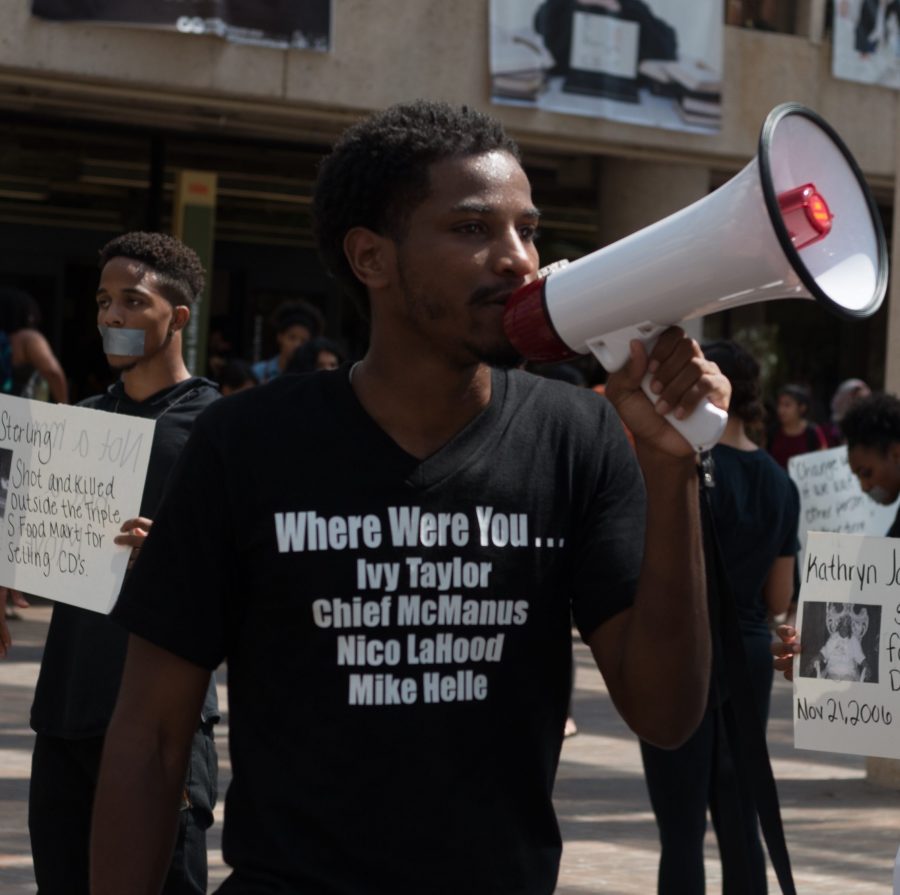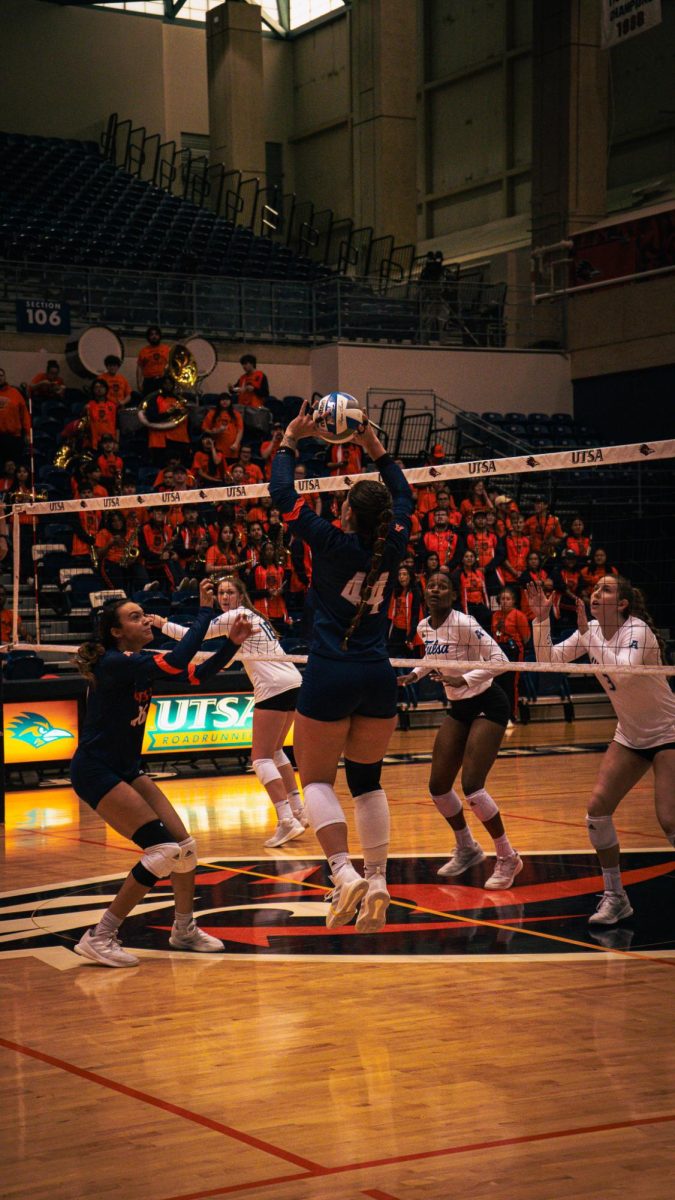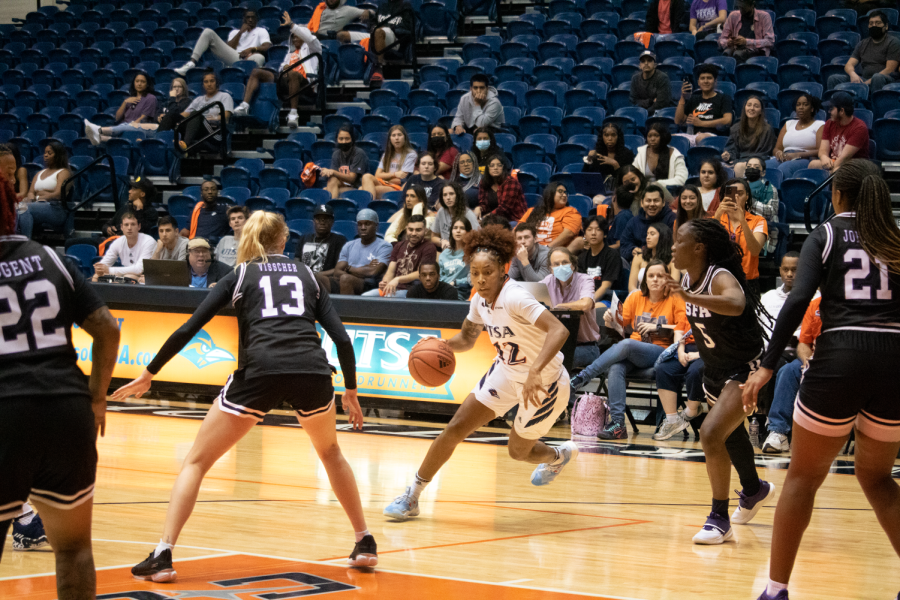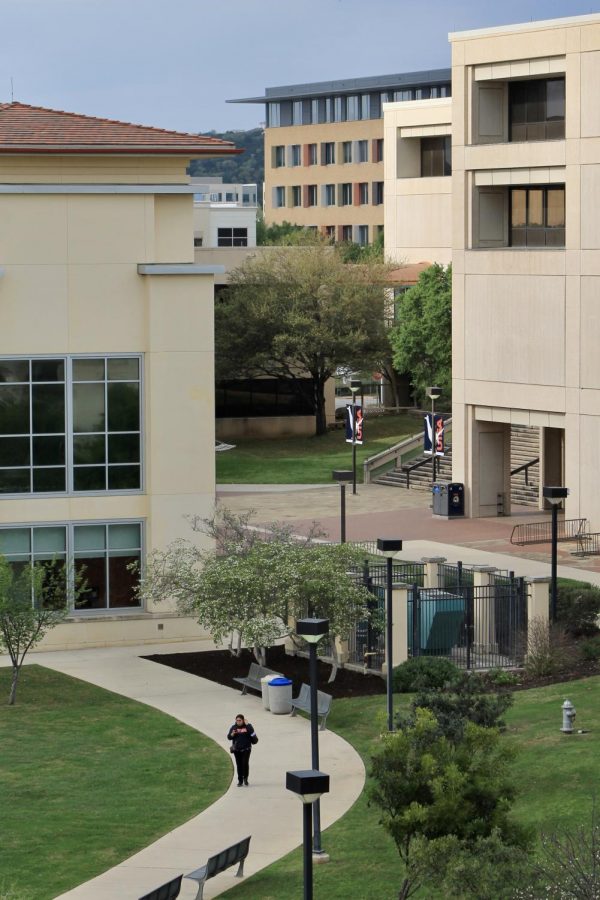On Oct. 6, UTSA students and local activists converged in the Sombrilla with duct tape over their mouths and brandished signs with photos of black Americans who lost their lives in episodes of police brutality throughout the country.
The UTSA chapter of NAACP organized a silent protest at the Sombrilla to call attention to disproportionate police violence against African Americans. Students participating wore black in solidarity and duct-taped their mouths to symbolize the unheard voices of victims.
Jonathan David Jones, UTSA alumnus and local activist, helped coordinate the protest. “Planning is robust,” Jones said. For him, it’s the behind the scenes logistical work that often goes unnoticed. “As an organizer, I’ve led and been a part of the rigorous process. There’s attire you coordinate, which is usually simple. But then you have to consider the weather and the time. Is traffic going to be a problem? At what times will parking be difficult? At what times can we expect everyone who wants to be involved to be able to, when everyone’s managing work schedules? Things such as health and safety, too.”
Jones said these are just a few of the questions organizers have to ask themselves.
In addition to these concerns, Jones also discussed optimizing the impact of an action through choreography. “What route will give the most exposure, and what route will present the most risk?” he said. Accessibility is another pressure on planning a successful action. “How do we manage the route for those that may not be able to walk as far?” The group makes sure to have lawyers on call, as the work that the work that they’re doing may be provocative. “Making sure we are focused, deliberate and specific to why we’re there, to avoid unnecessary conflict with opposition.” These are the basics that an organizer must consider.


From an outside view, the action appears completely spontaneous.
Zac Sowell, freshman human resources management major, participated in the protest.
“This is a silent protest for the unfairly treated black people who were killed in a variety of incidents over the past few years, such as Tamir Rice, Mariah Sandra Bland and others who lost their lives from police brutality,” Sall explained.
A number of students protesting held signs to honor the memory of those lost. Along with a photo of each victim, the signs outlined the stories of their deaths.
The protest was not exclusive to members of UTSA NAACP.
“It’s a public protest. Anyone can join and support based on how they feel.”
Sowell heard about the protest through the UTSA NAACP. He advised students who missed the opportunity to participate to follow the various social media sources under the UTSA NAACP handle.
“Twitter is a big one,” Sowell said.
A form was circulated at the event inscribed with the mantra “Smash This Racist System With Multiracial Unity” that highlighted issues like police brutality, capitalism, imperialism and cross-racial solidarity. According to Jones, these “are branches to a root problem.” For him, the personal is political. “My very existence as a black man is radical,” Jones said. “Considering I live in a system that is designed to keep me silent, broken, enslaved and imprisoned.” Jones asked, “what would society see as radical? That’s simple: my freedom.”
Some spectators joined the group when they saw the protest, including a UTSA faculty member.
Dr. Walter Wilson, assistant professor in the Department of Political Science & Geography, said, “I asked a participant if I could stand with him because I wanted people to know that this injustice is unacceptable to me, even though I am not black. The participant nodded yes, and other participants brought him a sign and tape to cover his mouth.
“I think the importance of protests like these is to raise awareness and build understanding and solidarity within the campus community,” Wilson explained. “I rarely see students socializing outside their racial and ethnic groups on campus. That’s a shame and a missed opportunity to build mutual understanding and to learn from one another. When students demonstrate, it creates an opportunity not only for protesters to send a message but also for observers to open their minds.”
Sabrina Perez, freshman biology major, was among the students gathered at the Sombrilla.
“I think that it’s honorable that they’re standing for what they believe in,” Perez said.


“I admire the students involved in Thursday’s protest,” said Wilson, “because they set such an excellent example for their peers by sending a powerful message in a firm yet inclusive and provocative yet peaceful way.”
“I would urge students who want to organize for a cause to be inclusive and peaceful,” Wilson said. “It takes courage to stand up for one’s convictions peacefully and with love, but doing so will most effectively challenge the conscience of the observer.”
Wilson encourages students to work with campus offices by notifying administrators, including the campus police.
“By conducting themselves in these ways, student demonstrators will legitimize their actions and win respect and support for their cause.”












